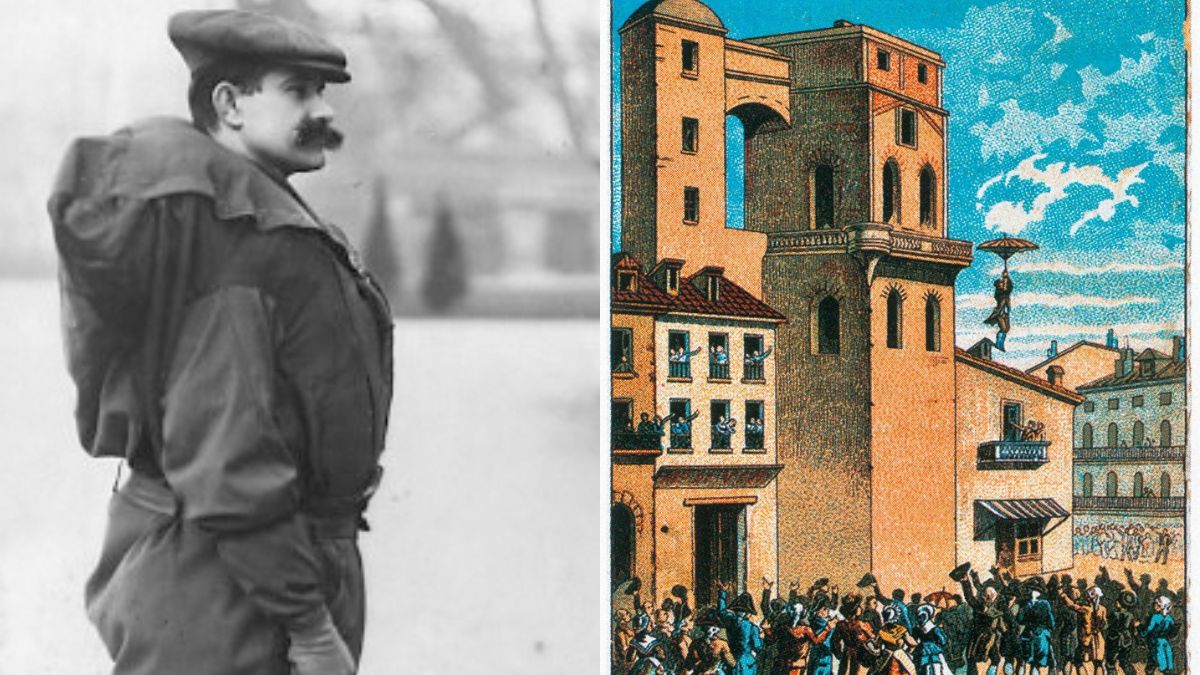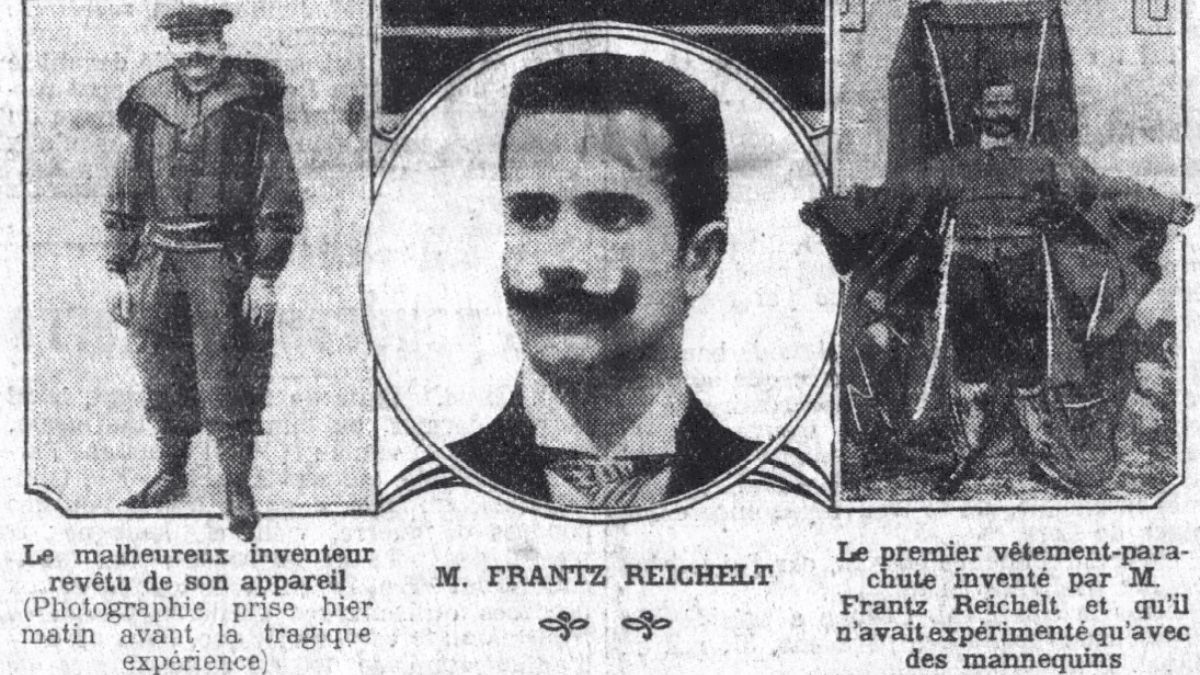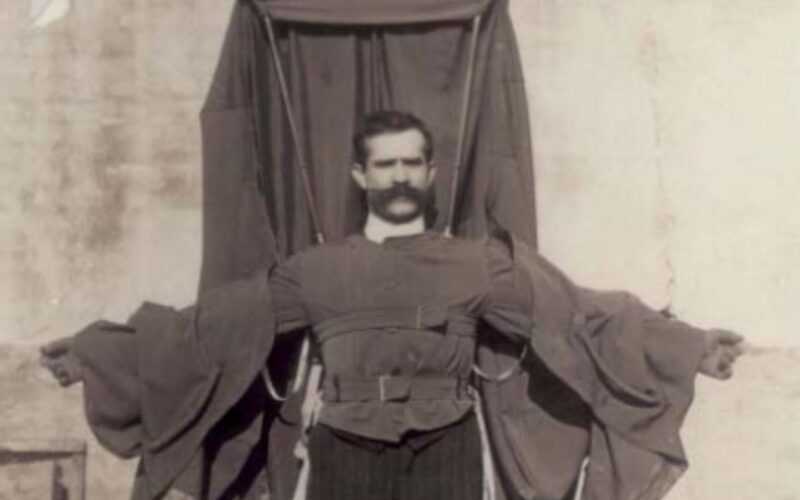Franz Reichelt, a name that lives on in history as a cautionary tale of innovation and tragedy. Known for his ambitious attempts to create a wearable parachute, Reichelt’s story is a poignant reminder of the risks involved in pushing the boundaries of science and engineering.
Born in Austria in 1879, Franz Reichelt was a tailor by trade but harbored a passion for aviation. Inspired by the early pioneers of flight, Reichelt set out to invent a device that could potentially save the lives of pilots and aviators in the event of an emergency. His vision was to create a compact and lightweight parachute that could be worn like a garment, allowing individuals to escape from aircraft or tall structures safely.

Reichelt devoted years of his life to perfecting his parachute design. He conducted numerous experiments and tests, refining his prototypes with each iteration. In 1911, he filed a patent for his invention, which he called the “parachute-suit.” Reichelt’s design consisted of a canopy made of silk fabric attached to a metal frame, which was intended to be worn like a backpack.
Despite his meticulous efforts, Reichelt struggled to gain the recognition and support he needed to validate his invention. Undeterred, he continued to refine his design and conduct experiments to prove its efficacy. In early 1912, Reichelt approached the French authorities with a proposal to test his parachute from the Eiffel Tower, believing that a successful demonstration would catapult him to fame and fortune.
On February 4, 1912, Franz Reichelt ascended to the top of the Eiffel Tower, accompanied by a small crowd of spectators and journalists. Clad in his parachute-suit, Reichelt prepared to make his historic leap from the iconic landmark. However, what followed was a tragic and fatal miscalculation.
In a moment that would be captured on film and immortalized in history, Reichelt leaped from the Eiffel Tower, expecting his parachute to deploy and slow his descent. Instead, the parachute failed to open properly, and Reichelt plummeted to the ground below. The impact was fatal, and Franz Reichelt perished instantly.

The tragic outcome of Franz Reichelt’s ill-fated experiment sent shockwaves through the aviation community and garnered widespread media attention. His death served as a stark reminder of the dangers inherent in experimental aviation and the importance of thorough testing and validation procedures.
In the aftermath of the incident, Franz Reichelt’s parachute-suit was scrutinized by experts, who concluded that its design was fundamentally flawed and unlikely to ever function as intended. Despite his noble intentions and tireless efforts, Reichelt’s dream of creating a life-saving parachute ultimately ended in tragedy.
Today, Franz Reichelt is remembered as a cautionary tale of the perils of unchecked ambition and the sobering reality of failure in the pursuit of innovation. His story serves as a reminder to future generations of inventors and engineers to approach their work with humility, diligence, and respect for the inherent risks involved.
In conclusion, Franz Reichelt’s legacy is a complex and poignant one, marked by ambition, tragedy, and the relentless pursuit of innovation. While his parachute experiment ended in failure, his story endures as a sobering reminder of the human cost of daring to dream and the importance of learning from the mistakes of the past.










